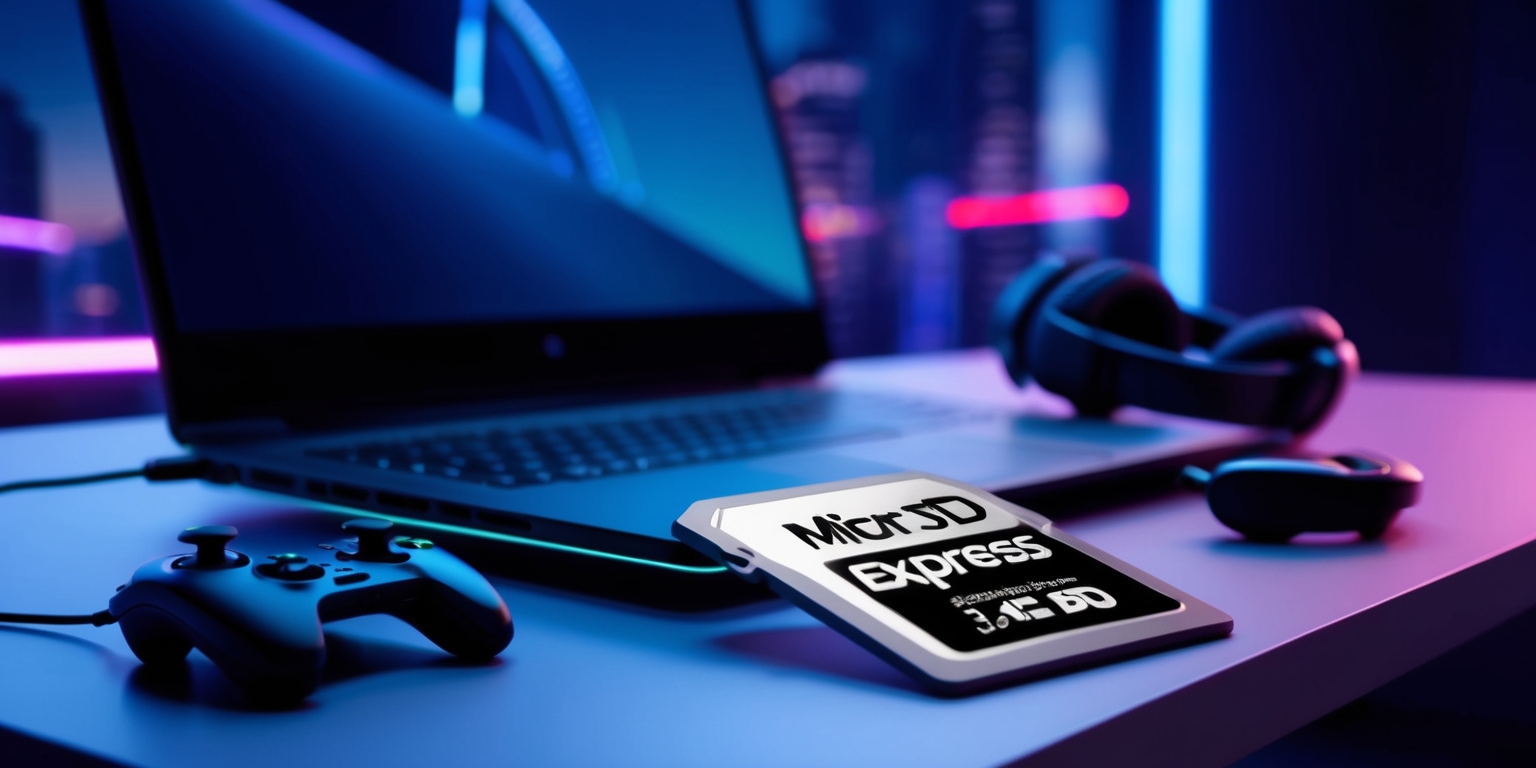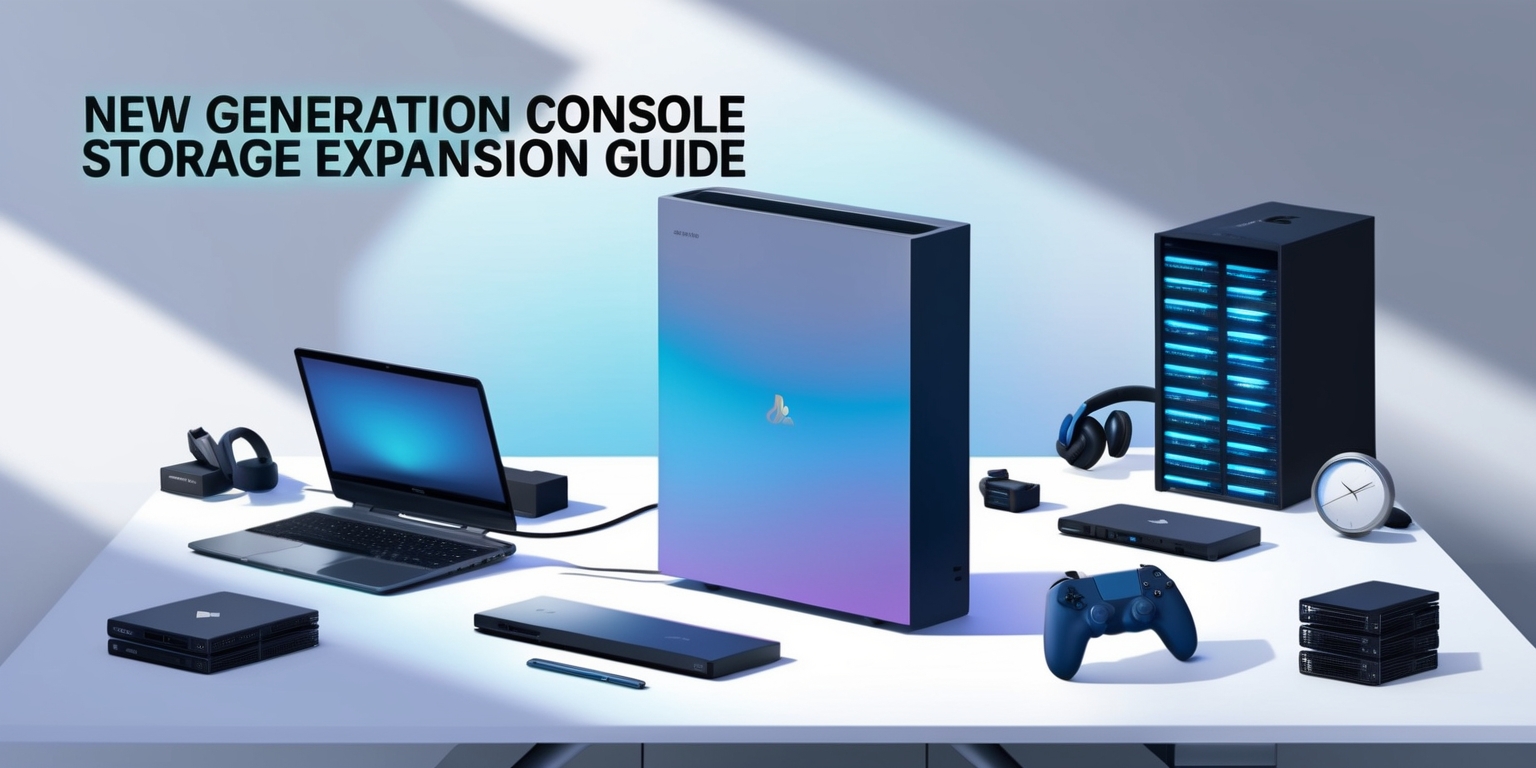Elevate Your Gaming: Mastering MicroSD Express Storage Expansion
- Jul 07, 2025
- 444

The excitement of expanding storage on the latest The console injects a refreshing burst of innovation into avid gamers who are eager to optimize their gaming library. The new generation console offers enhanced internal memory, yet managing a robust collection of beloved titles often requires additional space. This guide explores the process of transferring game data onto an SD card, shedding light on each step and technical nuance to ensure that every gamer can enjoy an uninterrupted experience. As you venture into this practical realm, the interplay between hardware configuration and software management reveals an elegant balance that underpins the console’s user-centric design.
Storage Expansion Essentials
The transition from relying solely on internal memory to embracing external storage begins with understanding how to effectively manage your digital collection. The system's design anticipates that the internal memory may soon reach its limits, particularly when migrating data from earlier models. A dedicated microSD Express card is required with the new console. As users explore this functionality, they find that the interface intuitively guides them through the process of inserting the card — a step that necessitates lifting a designated panel on the back of the device. Following on-screen instructions and prompts, every detail of the setup is meticulously designed for ease beneficial, guaranteeing that even beginners in the technology can quickly master the art of digital file management while preparing for enhanced storage capabilities.
Embracing SD Card Options
When preparing to enhance your console’s storage capacity, it is imperative to recognize the differences between prior SD card options and the new microSD Express card. This change is critical for ensuring compatibility with the advanced hardware capabilities of the console. Users must purchase this new card Here's a rephrased version that maintains the original context: "individually, as it is omitted from the" console package. Its enhanced performance supports swift data transfers and provides expanded capacity, allowing gamers to download and store a vast array of titles. With the transition from one generation of technology to the next, the need for a dedicated card that can handle higher data throughput becomes evident. Every step is underscored by the console’s built-in prompts, which verify that the user is following the appropriate procedures for seamless integration.
Understanding MicroSD Express Differences
A standout element of the recent update is… system is the introduction of the microSD Express card, which underlines the distinctions brought by technological advancements. Unlike the previous standard microSD cards, this new format offers improved speed and reliability tailored to the console’s high-performance requirements. The console automatically detects the insertion of this specialized card during the initial setup, thereby simplifying the migration process. A well-designed prompt on the device’s interface further ensures that users are aware of the correct card slot location and the proper method to guide the card into its position. Gamers are thus assured that their stored data will transition smoothly from older models, providing a seamless fusion of past collections and new functionalities.
Hardware Preparation Insights

Preparing the console for a shift in data location involves a careful blend of physical manipulation and intuitive technological design. The process requires a slight adjustment of the console's back stand to reveal the microSD Express slot, conveniently placed on the bottom-right side. This deliberate design decision aligns with user expectations, enabling a natural interaction with the device. On-screen clues further assist users by highlighting the precise area where the new card should be inserted. This straightforward operation minimizes any potential errors during the setup phase. The console is crafted to guide its owner through this essential hardware modification, ensuring that once the card is securely in place, subsequent game data transfers are conducted efficiently without the need for complex adjustments or additional technical knowledge.
Automatic Data Transfer Process
Once the microSD Express card is properly installed, the system springs into action by initiating an automated sequence to transfer game data. This smart function integrates backup files, saved data, and even screenshots from the previous-generation console. During this process, old game builds gradually make their way into the upgraded system, thereby removing the necessity for manual intervention. The console is designed to seamlessly download previously owned titles so that the user’s gaming experience remains uninterrupted. At the home screen, visual indicators help differentiate between games residing within the new storage and those pending a download. This automatic migration not only streamlines the transition but also reinforces the console’s commitment to user convenience by ensuring that no cherished detail is overlooked.
Interface Navigation and On-Screen Guidance
The elegance of the console largely stems from its intuitive interface that adeptly guides the user during the transition process. When initiating the use of the new microSD Express card, on-screen prompts serve as a reliable companion, detailing each step that is required for successful integration. The visual cues include messages that instruct when to lift the supporting stand and where the appropriate slot is located on the console’s body. By tapping into these prompts, users are led through each necessary motion, ensuring that the card is securely inserted while mitigating any potential for user error. This well-thought-out navigation system emphasizes a hands-on learning experience that, while straightforward, remains deeply embedded in technical precision and responsive design logic.
Data Management and Settings Navigation
The console provides a robust system settings menu designed to facilitate smooth data management. Users have the ability to navigate to the data management section where various options allow for the flexible movement of game data between internal memory and the newly inserted SD card. This functional area of the system is detailed enough for those with an acute understanding of digital file systems, yet accessible enough for everyday use. By selecting the appropriate data movement option, users are able to choose individual games or software, making the reallocation a customizable process. The interface reminds users to ensure that no game is active or in the midst of a download during transfers, ensuring that the movement process is executed without error. This thoughtful approach to data management emphasizes both efficiency and pragmatism.
Advantages of Virtual Game Cards
Central to the console’s innovative design is the Virtual Game Cards feature, which offers a dynamic method for managing game software purchases. When users acquire game titles from online platforms like the eShop, these software licenses are categorized under Virtual Game Cards. A dedicated icon on the home screen provides a visual representation of whether the game has been downloaded onto the SD card or remains pending. Each state is indicated by a distinct color cue, enabling users to quickly assess the status of their digital library. This platform goes beyond merely simplifying the procedure for… accessing game titles but also enhances the overall interactive experience. With visually appealing and instantly accessible categorization, the Virtual Game Cards simplify the management of an ever-growing game collection while also bolstering the console’s modern aesthetic.
Contrasting System Memory and SD Storage
In managing the extensive library of games, understanding the clear distinctions between system memory and SD card storage is essential. The console retains a dedicated area for internal game files, which is designed to complement the new external microSD Express card. The design allows for fluid movement of software between these two storage areas, delivering flexibility tailored to the user’s needs. Operating within the system menu, gamers can select specific titles or applications to reallocate, thereby ensuring optimal performance and available space. This division of storage responsibilities highlights the console’s capacity to manage resources efficiently. As it blends seamless UI design with robust data management protocols, the resulting performance is a testament to modern engineering prowess embedded within the gaming system.
System Configuration and User Customization
The operational flexibility of the console shines through its comprehensive system configuration options. Gamers are presented featuring a diverse collection of capabilities that make it possible to adjusting storage parameters and customizing the way data is managed across both internal and external storage media. Accessing the settings menu reveals a multitude of options tailored to enhance user control. Whether it is setting priorities for specific data types or monitoring storage usage in real-time, the system empowers users by providing an intuitive interface. The option to move software between the SD card and system memory, for example, encourages a proactive engagement with the system’s performance features. This level of control ensures that every adjustment made by the user contributes to a more seamless gaming experience without overwhelming complexity.
Peripheral Considerations and Further Enhancements
Beyond the fundamental operation of transferring data, the role of additional peripherals and related accessories forms a vital element in the entire gaming journey. The microSD Express card, while key to storage expansion, must be paired with careful selection of other compatible components to fully exploit the console’s capabilities. Gamers may consider supplementary adapters and protective cases that ensure longevity and ease of use. Additionally, hardware enhancements are designed to augment the aesthetic and functional performance of the device. These peripherals not only provide extra convenience but also enhance data security and overall system durability. By broadening the scope of hardware customization, the system caters to gamers who seek to elevate their setup into a personalized hub that is both powerful and visually appealing.